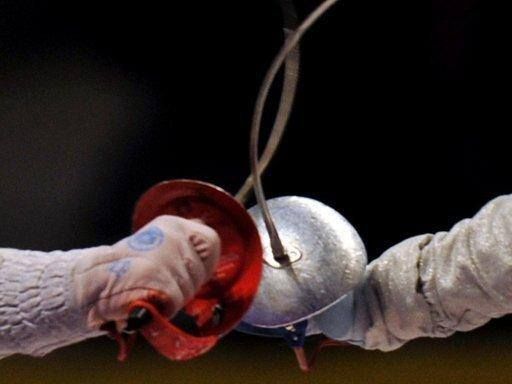Is it possible? Yes, but not the way you think it will be.
Theoretically, you could create the weapon you're describing by designing a "hybrid" weapon.
We can avoid some of the things you think are difficult by designing the weapon as such:
/| |\ /| and |\ represent the two blades of sword
||[]|| || ||
||[]||
||[]|| - Sword sections are actually 2 outer normal blades
||[]|| - Middle section of sword "[]" is one limb of a bow.
||[]|| - "M"s represent a locking mechanism in the hilts to allow
||[]|| the joining of the two swords into a single bow
||[]|| - Hilt and guard of the sword are normal
||[]|| - String can be attached through top of limb
||[]||
||[]||
||[]||
||[]||
|============| <--- guard
{}
{}
{}
{}
WWWW <------ Stores arrows
MMMM <------ Connecting spot, doubles as potential arrow rest
WWWW
{}
{}
{}
{}
|============| <--- guard
||[]||
||[]||
||[]||
||[]||
||[]||
||[]||
||[]||
||[]||
||[]||
||[]||
||[]||
||[]||
\| |/
String can be designed to be stored INSIDE the limb of the bow
pulled out and connected together, like so:
-------------[Locking mechanism][Locking mechanism]-------------
^
String
Basically, to answer your points:
- The sword parts don't bend (when pulling on the bowstring) - only the center, the limb part of the sword bends
- Assuming you designed the hilt locking mechanism properly, you could simply twist the swords 180 degrees to unlock and create 2 swords.
- This weapon shouldn't weigh much more than a normal sword. The limb used in the center of the weapon should overall cause the sword to be lighter than normal, since a large chunk of the metal will be gone.
- Done properly, you would be able to store 1 or 2 folding arrows in each hilt section. Carving out a section of the handle and hiding it in there is also an option.
- String attaches via Limbs
Would you be able to fight with this weapon? Yes, however there are some important things to note.
Note 1: Limited ammunition with regards to shooting arrows. Severely so, unless you carry extra arrows on a belt or something.
Note 2: Some fighting styles use the flat of the blade to block blows - this will damage your bow, and generally it's a bad idea to block with the edge of the blade as well, which means the defensive component of the fighting style of this sword user will likely need to be dodging and positioning based rather than parry based.
Note 3: This weapon does not make a good stabbing weapon. Slashing only please - curved blades can help with this.
Note 4: The bow mode won't look like a bow until you pull back the string, due to the way the string is notched and rests along the sword. It may end up looking like this from the side when pulled.
| /!
|/ ! | represents the blade
<-------! ! represents string
|\ ! <------ represents arrow
| \!
Note that since the middle of the blade is the limb, when firing as a bow
the flat of the blades will be facing towards you and the target. It
should look almost like a + shape when taking the guard into account.
Note 4: The string can lock using a similar twist and turn mechanism, which can double as an easy arrow nocking point.
Note 5: When using this in bow mode, your hand will likely be holding the bottom handle, since the middle section is where your arrow rest will be.
Note 6: This sword/bow hybrid is not going to be as good a sword or as good a bow when compared to a normal sword or bow. It is simply impossible to get the best of both worlds in a single weapon.
ALTERNATIVE METHOD:
You can use a double scimitar, and simply design the tip of the scimitar to allow string threading.
The sword still won't bend, however - instead, you'd want to put some springs between the guard of the sword and the hilt. This allows, when the swords are put together, for the springs to provide the power and the sword blades to become the limbs of the sword, almost like how a power spring bow would work.
However, you may have some issues with slashing depending on how stiff the springs are.
This method also doesn't seem as cool/original.







